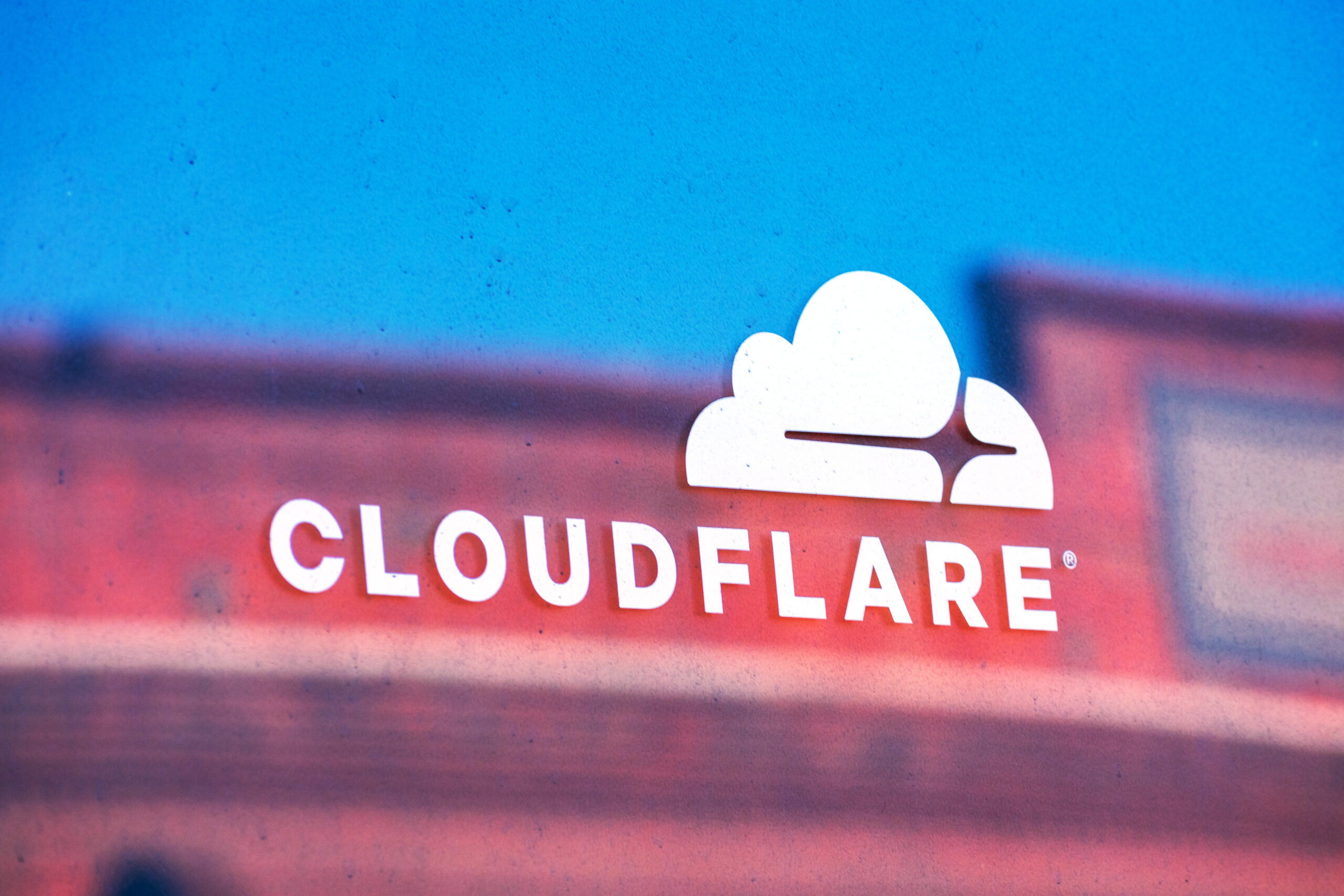In today’s interconnected digital landscape, there’s always an ever-present threat of cyberattacks that can disrupt online operations and compromise sensitive data. The recent record-breaking Distributed Denial of Service (DDoS) attack, thwarted by Cloudflare, serves as a stark reminder of the escalating scale and sophistication of these threats. This unprecedented 3.8 terabits per second (Tbps) assault not only tested the limits of modern cybersecurity defenses but also set a new benchmark for protection against such attacks. In the complex world of online security, understanding the implications of this event and the advanced technologies employed to combat it becomes crucial for safeguarding digital assets and maintaining business continuity.
Cloudflare Mitigates Record-Breaking 3.8 Tbps DDoS Attack

Cloudflare: Unprecedented Scale and Sophistication
- On October 2nd, 2024, Cloudflare successfully thwarted the largest Distributed Denial of Service (DDoS) attack ever recorded, measuring an astounding 3.8 terabits per second (Tbps). This mammoth assault dwarfed previous cyber onslaughts, showcasing the escalating magnitude of threats facing today’s digital landscape. The attack’s sheer volume underscores the critical need for robust, scalable cybersecurity solutions capable of defending against increasingly potent and complex attacks.
Swift and Seamless Mitigation of DDoS Attack by Cloudflare
- Despite the attack’s unprecedented scale, Cloudflare’s advanced defense mechanisms swiftly identified and neutralized the threat. The company’s innovative approach to DDoS protection, leveraging its vast network and cutting-edge algorithms, enabled it to absorb and disperse the massive influx of malicious traffic without any service disruptions. This seamless mitigation demonstrates the effectiveness of cloud-based security platforms in safeguarding critical online infrastructure.
Implications for Cybersecurity Landscape
- Cloudflare’s successful defense against this record-breaking attack sets a new benchmark for DDoS protection. It highlights the ongoing arms race between cybercriminals and security providers, emphasizing the need for continuous innovation in defensive technologies. This incident serves as a wake-up call for organizations worldwide, underscoring the importance of partnering with leading cybersecurity firms to ensure resilience against evolving threats in an increasingly interconnected digital ecosystem.
Inside the Largest DDoS Attack to Date
The recent 3.8 Tbps DDoS attack thwarted by Cloudflare marks a significant milestone in cyber defense history. This unprecedented assault showcases the evolving nature of digital threats and the critical importance of robust security measures.
Anatomy of the Attack
- The attack leveraged a massive botnet, orchestrating millions of compromised devices to flood Cloudflare’s systems with malicious traffic. This coordinated effort aimed to overwhelm servers and disrupt services, highlighting the sophisticated tactics employed by modern cybercriminals.
Cloudflare and Its Defense Mechanisms
- Cloudflare’s success in mitigating this record-breaking attack can be attributed to its advanced defense infrastructure. The company’s distributed network of data centers, coupled with real-time threat intelligence and machine learning algorithms, allowed for swift identification and neutralization of malicious traffic.
Implications for Cybersecurity
- This incident underscores the escalating arms race between attackers and defenders in the digital realm. As DDoS attacks grow in scale and complexity, organizations must continually evolve their security strategies to stay ahead of emerging threats. Cloudflare’s achievement sets a new benchmark for DDoS protection, emphasizing the crucial role of cloud-based security platforms in safeguarding the internet’s infrastructure.
The successful mitigation of this massive attack not only reinforces Cloudflare’s position as a leader in cybersecurity but also serves as a wake-up call for businesses and institutions to prioritize robust, scalable defense mechanisms in an increasingly hostile digital landscape.
Implications of the Attack on Cybersecurity
Escalating Threat Landscape
- The unprecedented 3.8 Tbps DDoS attack thwarted by Cloudflare serves as a stark reminder of the rapidly evolving cybersecurity landscape. This incident highlights the increasing sophistication and scale of cyber threats facing organizations today. As attackers continue to refine their techniques and leverage more powerful tools, businesses must remain vigilant and proactive in their defense strategies.
Need for Robust Infrastructure
- This record-breaking attack underscores the critical importance of having a resilient and scalable cybersecurity infrastructure. Organizations must invest in advanced DDoS mitigation solutions capable of handling massive traffic volumes without compromising performance. Cloud-based security platforms, like the one employed by Cloudflare, have proven particularly effective in absorbing and neutralizing large-scale attacks.
Importance of Continuous Innovation
- The successful mitigation of this attack demonstrates the value of ongoing innovation in cybersecurity. As threats grow in complexity, security providers must continually evolve their technologies and methodologies to stay ahead of malicious actors. This incident will likely spur further advancements in DDoS protection techniques, benefiting the entire digital ecosystem.
Collaborative Defense Strategies
- Finally, this attack emphasizes the need for increased collaboration within the cybersecurity community. Sharing threat intelligence, best practices, and mitigation strategies can help organizations collectively strengthen their defenses against large-scale DDoS attacks and other cyber threats. By working together, businesses and security providers can create a more resilient digital environment for all.
Cloudflare’s Advanced Defenses Against Evolving Threats
Cloudflare: Multi-Layered Protection Strategy
- Cloudflare’s success in thwarting the massive 3.8 Tbps DDoS attack demonstrates its cutting-edge defense mechanisms. The company employs a multi-layered approach, combining machine learning algorithms, real-time traffic analysis, and global threat intelligence to identify and mitigate attacks swiftly. This comprehensive strategy allows Cloudflare to adapt to emerging threat vectors and maintain robust protection for its clients.
Scalable Infrastructure and Network Capacity
- A key factor in Cloudflare’s ability to withstand such large-scale attacks is its highly scalable infrastructure. The company’s global network of data centers provides enormous bandwidth capacity, allowing it to absorb and filter out malicious traffic without compromising legitimate user access. This distributed architecture ensures resilience against even the most intense DDoS onslaughts.
Cloudflare: Continuous Innovation in Cybersecurity
- Cloudflare’s successful mitigation of this record-breaking attack underscores its commitment to continuous innovation in the cybersecurity field. By investing in research and development, the company stays ahead of evolving threats, constantly refining its defense mechanisms to counter increasingly sophisticated attack techniques. This proactive approach positions Cloudflare as a leader in safeguarding the digital ecosystem against future challenges.
The Critical Role of Robust Cyber Defenses
In today’s interconnected digital landscape, the importance of robust cyber defenses cannot be overstated. As the Cloudflare incident demonstrates, the scale and sophistication of cyber threats continue to evolve at an alarming rate. Organizations must prioritize cybersecurity measures to protect their assets, data, and reputation from increasingly potent attacks.
Proactive Protection as Shown by Cloudflare
Implementing proactive security measures is crucial for safeguarding against potential threats. This includes:
Regular security audits and vulnerability assessments
Continuous monitoring of network traffic for anomalies
Implementing multi-layered security protocols
Scalable Infrastructure for Cybersecurity Platforms Like Cloudflare
- To effectively combat large-scale DDoS attacks, organizations need scalable infrastructure capable of absorbing and mitigating massive traffic surges. Cloud-based security platforms, like Cloudflare, offer the necessary flexibility and capacity to handle such attacks without compromising service availability.
Collaborative Defense
- Cybersecurity is a collective responsibility. Sharing threat intelligence and best practices across industries and with government agencies can significantly enhance overall defense capabilities. By fostering a culture of collaboration, organizations can stay ahead of emerging threats and develop more effective countermeasures.
As cyber threats continue to escalate, investing in robust defense mechanisms is no longer optional—it’s a critical necessity for ensuring business continuity and maintaining trust in the digital ecosystem.
Key Takeaways
Considering the implications of this record-breaking DDoS attack, it’s crucial to recognize the ever-evolving landscape of cybersecurity threats. Cloudflare’s successful mitigation of this unprecedented 3.8 Tbps attack serves as a testament to the power of advanced defense mechanisms and the importance of staying ahead of malicious actors. While this incident sets a new benchmark for cyber defense, it also underscores the need for continued vigilance and investment in robust security measures. As the digital world becomes increasingly interconnected, your organization must prioritize cybersecurity to safeguard against potential attacks and maintain the integrity of your online presence.
More Stories
Qwen3: Alibaba’s Open-Source AI Pushes the Boundaries of Hybrid Reasoning
Alibaba’s open-source model, Qwen3, marks major progress in hybrid reasoning. This new model blends traditional AI with dynamic reasoning, creating a flexible and efficient tool for developers globally.
Pony.ai Accelerates Toward Profitability with Strategic Fleet Expansion and Cost Optimization
Pony.ai is making strategic moves to accelerate its path toward profitability. As you navigate the complexities of this cutting-edge industry, it is crucial to understand how this Chinese company positions itself for success.
CrowdStrike Elevates Cloud Defense with Real-Time AWS IAM Identity Center Threat Detection
As you navigate the complex landscape of cloud security, staying ahead of evolving threats is paramount. CrowdStrike’s latest enhancement to its Falcon Cloud Security platform introduces real-time threat detection for AWS IAM Identity Center, elevating your defense capabilities to new heights.
ASUS AiCloud Bug Exposes Home Networks to Remote Attacks
Are you aware that your home network could be at risk? A recently discovered vulnerability in ASUS AiCloud-enabled routers has sent shockwaves through the cybersecurity community. This critical flaw, identified as CVE-2025-2492, exposes your network to potential remote attacks, allowing unauthorized access to your devices.
Samsung SmartThings Evolves: AI-Powered Automation and Ambient Sensing Redefine the Smart Home Experience
Samsung SmartThings redefines your connected living experience. With the introduction of AI-powered automation and ambient sensing capabilities, SmartThings is elevating home management to unprecedented levels of sophistication and convenience.
Fujitsu, Supermicro, and Nidec Unite to Revolutionize Data Center Cooling Efficiency
In the ever-evolving landscape of liquid cooling data centers, a groundbreaking collaboration has emerged to address one of the industry's...


